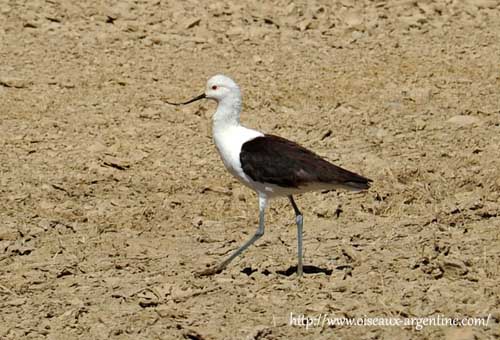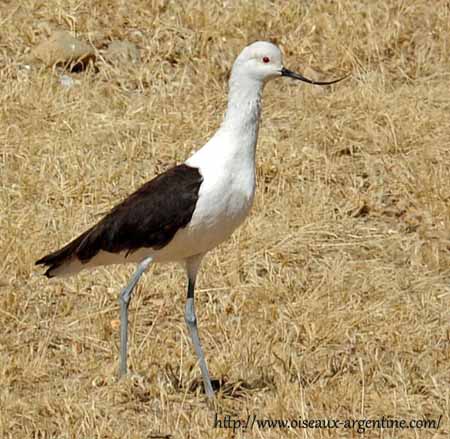
Fr: Avocette des Andes
All : Andensäbelschnäbler
Esp : Avoceta Andina – Caití (Chili)
Ital : Avocetta delle Ande
Nd: Andeskluut
Sd: Andinsk skärfläcka
Photographers:
Philippe and Aline Wolfer
OISEAUX D'ARGENTINE
Text by Nicole Bouglouan
Sources:
HANDBOOK OF THE BIRDS OF THE WORLD Vol 3 by Josep del Hoyo-Andrew Elliott-Jordi Sargatal - Lynx Edicions - ISBN : 8487334202
SHOREBIRDS by Peter Hayman, John Marchant and Tony Prater – Christopher Helm – 1986 – ISBN: 0747014035
BirdLife International (BirdLife International)
Andean Avocet
Recurvirostra andina
Charadriiforme Order – Recurvirostridae Family
BIOMETRICS:
Length: 43-48 cm
Weight: 315-410 g
DESCRIPTION:
The Andean Avocet is a resident species in the Andes. It breeds in puna zones, above 3100 metres of elevation.
The adult has compact body, shorter legs and broader wings than other avocets.
Head, neck, upper mantle, rump and underparts are white, sometimes stained ferruginous below. The underwing show silvery-black flight feathers contrasting with white coverts and axillaries.
Rest of mantle, upperwing and tail are dark brown to blackish.
The typical up curved bill is black. The eyes are orange with yellow eyering. Legs and feet are blue-grey.
Both sexes are similar.
The juvenile has indistinct rusty feather edges on the upperparts.

VOICE: SOUNDS BY XENO-CANTO
The Andean Avocet is often noisy when breeding and in flight. The contact call is variable, but it is often described as “kluit”. Variations are used according to the situation. The alarm call increase in volume, becoming little by little sometimes intensive.
Actually, each situation has its own call.
HABITAT:
The Andean Avocet usually frequents saline and alkaline lakes, open parts of marshes, seasonally flooded meadows and small pools. This species breeds at high elevation in the Andes, above 3100 metres, usually in puna zones.
Outside the breeding season, it frequents other types of wetlands and also tidal flats along the coasts.
RANGE:
The Andean Avocet is found in C Peru, southwards through W Bolivia to N Chile and NW Argentina.
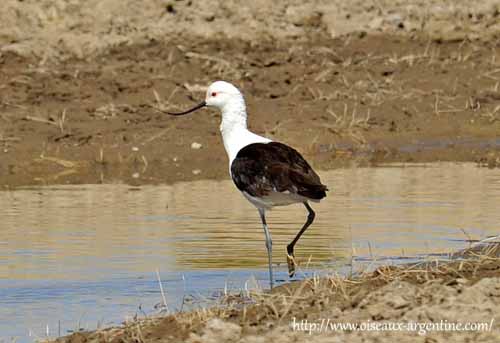
BEHAVIOUR:
The Andean Avocet feeds on small invertebrates found in the water. When foraging in shallow lagoons, it searches for prey by sweeping the bill side to side. Then, this peculiar bill filters out the small food items thanks to the lamellae.
It may swim and even perform upending. Both visual and tactile methods are used.
This species can be seen close to Chilean Flamingos.
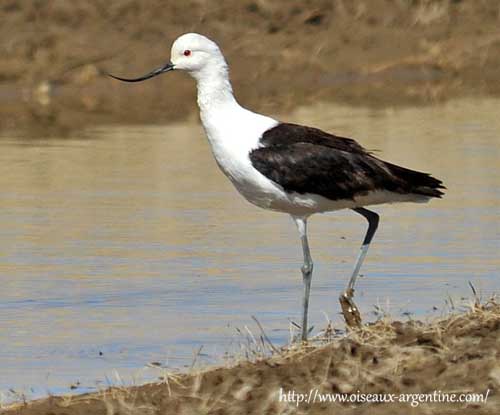
The Andean Avocet breeds in small groups in loose colonies scattered along the shallow saline lagoons at high elevation.
The courtship behaviour of this species is unknown, but they probably use the same displays that other avocets, with various postures, bowing, crouching and “dance” with open wings.
Mutual preening and synchronized displays are performed by both mates. They are monogamous, at least for one season.
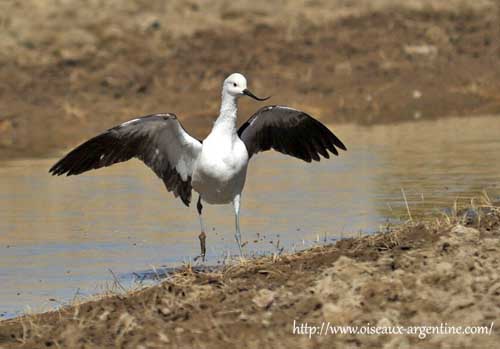
The Andean Avocet appears mainly sedentary. It may perform altitudinal movements to lower areas during the harshest cool and windy periods.
FLIGHT:
The Andean Avocet has straight, rather swift flight. Neck and legs are fully extended out of the body during the flight.
REPRODUCTION:
The Andean Avocet probably breeds during the local summer, but this period may vary according to the rainfalls.
With eggs reported both in September/October and January/February, there are possibly two nesting seasons per year.
The female lays usually four eggs in a scrape on the ground, often fairly close to some water. At hatching, the chicks are greyish-white with dark spotting above, and white below.
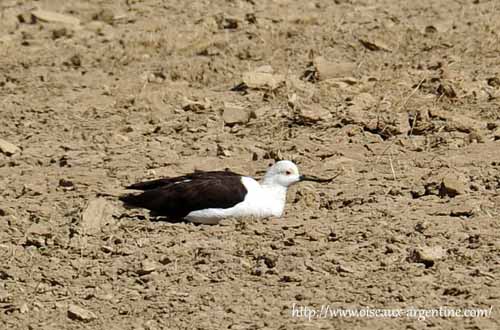
DIET:
The Andean Avocet feeds on aquatic invertebrates, small crustaceans and molluscs. It forages in shallow water by scything, using its well adapted bill to filter out the preys.
PROTECTION / THREATS / STATUS:
The statuses of the Andean Avocet are poorly known. This species is often seen in small groups of 15-20 birds and is generally sparse. Habitat loss due to massive desiccation of some lakes could be a threat in the future, although there still are fairly extensive suitable habitats. The Andean Avocet is evaluated at Least Concern by BirdLife International.
